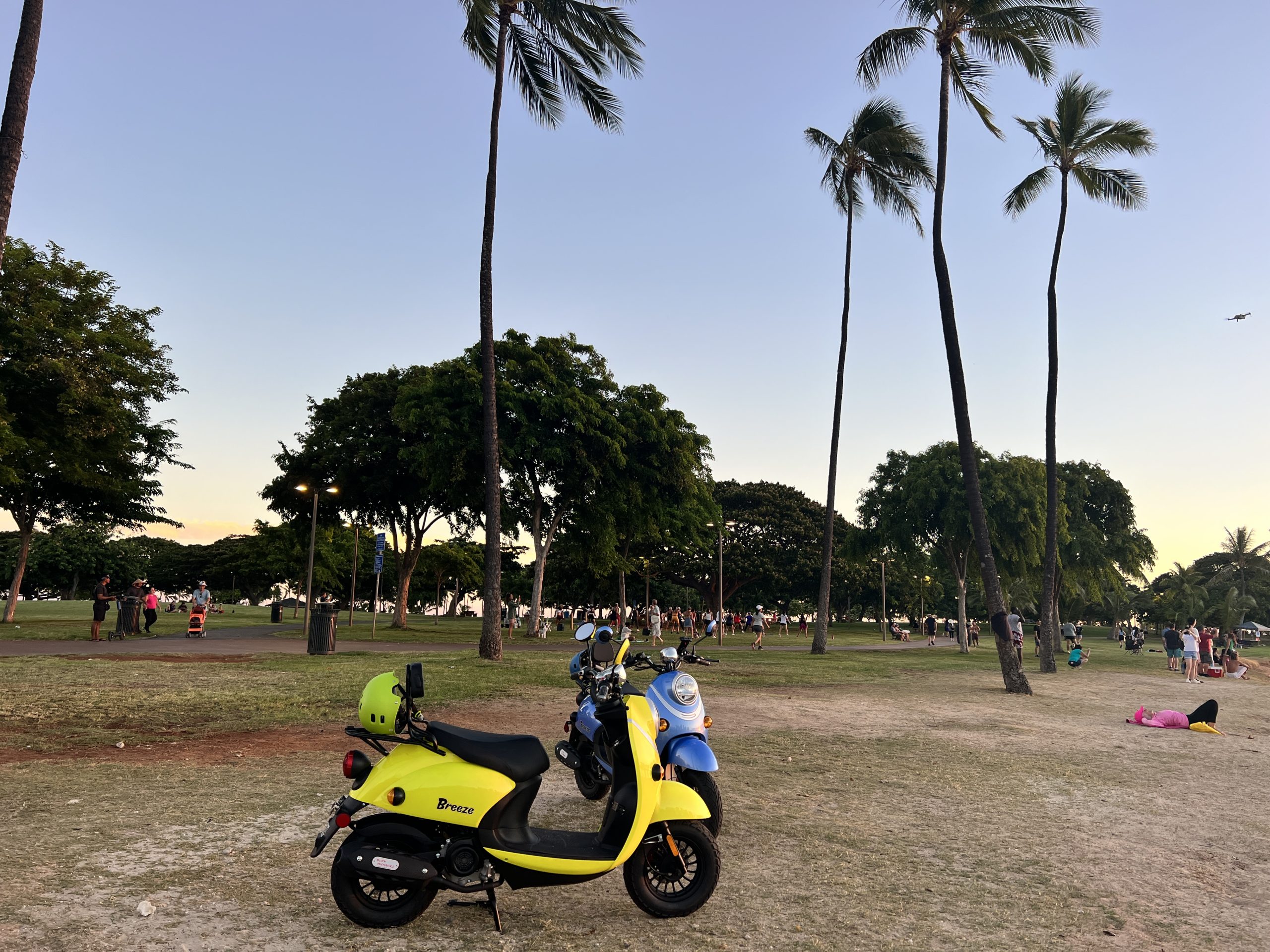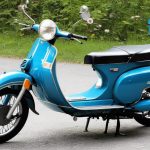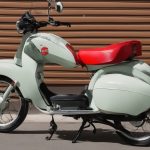Mopeds are special types of motorcycles. They are a popular form of transportation, especially in urban areas. They’re small, fuel-efficient, and easy to maneuver. But how much does a moped weigh?
That’s an important question to ask when choosing a moped, as the weight will affect its handling, performance, and portability.
In this article, I’ll share the factors that affect the weight of a moped and provide tips for choosing the right weight for you.
Why Is It Important to Know How Much a Moped Weighs?
It is important to know how much a moped weighs for a number of reasons:
- Safety: A moped that is too heavy for you to handle can be dangerous. If you can’t easily maneuver your moped at low speeds, you are more likely to get into an accident.
- Performance: The weight of your moped will affect its performance, such as its acceleration, top speed, and fuel economy. A heavier moped will be slower and less fuel-efficient than a lighter moped.
- Portability: If you need to transport your moped, such as in a truck or van, you will need to know its weight to make sure that your vehicle can handle the load.
- Registration: In some states, you may need to register your moped with the Department of Motor Vehicles. The registration process may require you to know the weight of your moped.
Here are some specific examples of how the weight of your moped can affect you:
- If you are a new rider, a lighter moped may be easier for you to handle. Be sure you check this when considering scooter rentals.
- If you are riding in a city with a lot of traffic, a lighter moped may be more maneuverable.
- If you are riding in a hilly area, a lighter moped may make it easier to climb hills.
- If you are riding long distances, a lighter moped may be more fuel-efficient.
- If you need to transport your moped in a vehicle, you will need to make sure that your vehicle can handle the weight.
When choosing a moped, it is important to consider your weight and strength. You should also consider the type of riding you will be doing and the terrain you will be riding on. Choose a moped that is the right weight for you and your needs.
Factors Affecting the Weight of a Moped
The weight of a moped is an important factor to consider when choosing one. Mopeds that are too heavy can be difficult to handle and maneuver, while mopeds that are too light may not be stable enough.
There are a number of factors that can affect the weight of a moped, including:
Engine size: The size of the engine is the most important factor that affects the weight of a moped. Larger engines are heavier than smaller engines. This is because larger engines have more components, such as pistons, cylinders, and valves.
Frame material: Mopeds are typically made with either aluminum or steel frames. Aluminum frames are lighter than steel frames, but they are also less durable. Steel frames are heavier than aluminum frames, but they are also more durable.
Features and accessories: The features and accessories that you choose for your moped can also affect its weight. For example, a moped with a windshield, luggage rack, and saddlebags will be heavier than a moped without these features.
Other factors: Other factors that can affect the weight of a moped include the fuel tank size, suspension system, and tires. Mopeds with larger fuel tanks, more sophisticated suspension systems, and wider tires will tend to be heavier than mopeds with smaller fuel tanks, simpler suspension systems, and thinner tires.
What Is the Average Weight of a Moped?
The average weight of a moped varies depending on the engine size, frame material, and features and accessories. However, most mopeds weigh between 150 and 250 pounds.
Here are some examples of the average weights of different types of mopeds:
Gas-Powered Mopeds
- Honda Ruckus: 162 pounds
- Yamaha Vino 125: 169 pounds
- Kymco Agility 50: 174 pounds
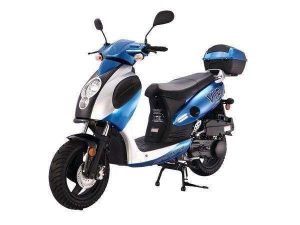
Electric Mopeds
- NIU NQi Sport: 148 pounds
- Super73 S2: 164 pounds
- Vespa Elettrica: 176 pounds
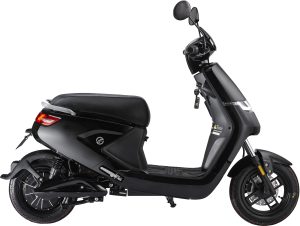
Mopeds are not typically considered adventure bikes. Adventure bikes are motorcycles that are designed for both on-road and off-road riding. They typically have larger engines, longer suspensions, and more rugged construction than mopeds. Mopeds are typically smaller and lighter vehicles that are designed for city riding and commuting.
However, there are some mopeds that are designed for off-road riding. These mopeds are often called dual-sport mopeds. Dual-sport mopeds typically have larger engines, longer suspensions, and knobby tires. They are also more likely to have features such as skid plates and handguards.
Whether or not a moped is considered an adventure bike depends on its intended use. If you are looking for a motorcycle that can handle both on-road and off-road riding, then an adventure bike is the better choice. If you are looking for a lightweight and fuel-efficient vehicle for city riding and commuting, then a moped is a good option.
Factors to Consider When Choosing a Moped Based on Weight
When choosing a moped, the weight of the moped is an important factor to consider. The weight of a moped can affect its handling, performance, and portability. It is important to choose a moped that is the right weight for you and your needs.
Here are some factors to consider when choosing a moped based on weight:
- Your weight and strength: If you are a new rider, you may want to choose a lighter moped that is easier to handle. A heavier moped may be more difficult to maneuver and control, especially at low speeds.
- The type of riding you will be doing: If you are planning on riding in a city with a lot of traffic, you may want to choose a lighter moped that is more nimble and easier to squeeze through tight spaces. A heavier moped may be more difficult to maneuver in traffic and may require more space to turn.
- The terrain you will be riding on: If you are planning on riding on rough terrain, such as gravel roads or dirt trails, you may want to choose a heavier moped with a more robust suspension system. A lighter moped may be more susceptible to damage on uneven terrain.
- The features and accessories you need: If you need a moped with a lot of features and accessories, such as a windshield, cargo rack, or saddlebags, you will need to choose a heavier moped. These features and accessories can add significant weight to the moped.
- Compare the curb weights of different mopeds. The curb weight is the weight of the moped with a full fuel tank and all of its standard features. This will give you a good comparison of the overall weight of different mopeds.
- Consider the weight distribution of the moped. Some mopeds have a more balanced weight distribution than others. A moped with a more balanced weight distribution will be easier to handle and control.
- Take the moped for a test ride. This is the best way to get a feel for the weight of the moped and how it handles.
To Sum Up
The weight of a moped is an important factor to consider when choosing one. It is important to choose a moped that is the right weight for you and your needs.
When choosing a moped, it is important to compare the curb weights of different mopeds. The curb weight is the weight of the moped with a full fuel tank and all of its standard features. This will give you a good comparison of the overall weight of different mopeds.
You should also consider the weight distribution of the moped. A moped with a more balanced weight distribution will be easier to handle and control.
Finally, be sure to take the moped for a test ride before you buy it. This is the best way to get a feel for the weight of the moped and how it handles.

